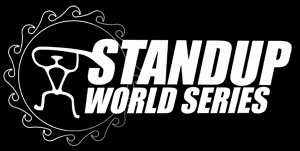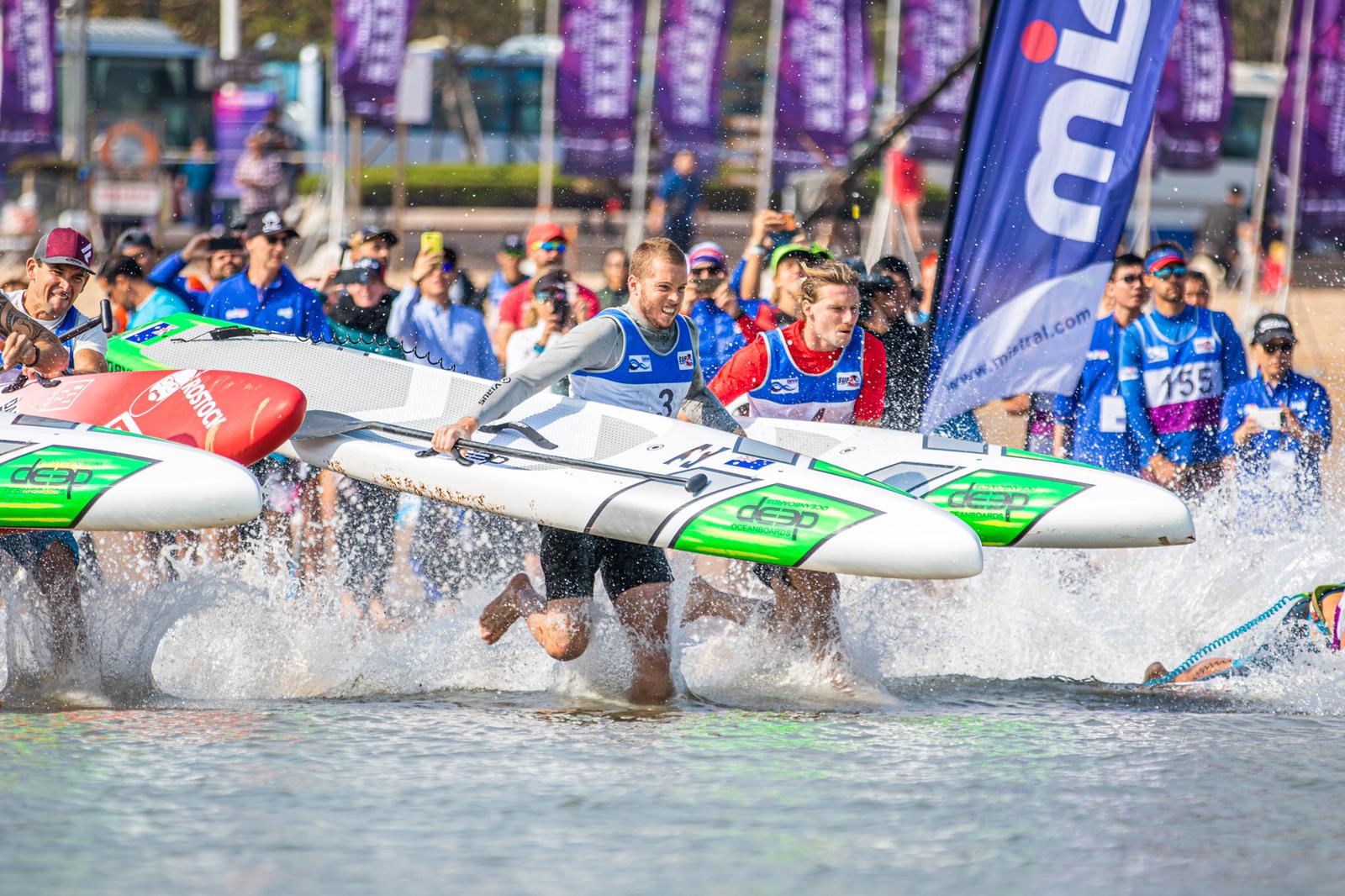
Stand Up World Series updates (prize money, points, and the one World Champion…)
 The Stand Up World Series is a new, global stand up paddle racing series being setup by the Waterman League.
The Stand Up World Series is a new, global stand up paddle racing series being setup by the Waterman League.
The Waterman League, run by CEO Tristan Boxford, are the team behind the Stand Up World Tour, which has been running for the past two years.
(for those confused, the difference between the Stand Up World Tour and the Stand Up World Series is quite simple; SUP World Tour = surfing. SUP World Series = racing)
The SUP racing world got a taste of the World Series at the recent North Shore Paddle Challenge (October 2011) and Namotu Paddle Challenge (Fiji, November 2011) events. The North Shore event was a test run for the Series’ race formats, while the Namotu Paddle Challenge was the first official event of the 2012 season.
Last week the 2012 Stand Up World Series race schedule was announced, with further details set to be revealed in late January. But in the meantime I was keen to know more, so I spoke with Tristan Boxford and got the following details…
15x17x events are confirmed for 2012 Stand Up World Series, with more stops potentially being added.
- Each event will consist of two separate races; a Knockout Surf Sprint and a Long Distance race. Results from each race will be combined to produce an overall winner.
- Both the Surf Sprint and the Long Distance races will be raced on 12’6″ boards.
- There will be “Open” divisions in the Long Distance races, to ensure maximum participation by local paddlers, however only those riding 12’6″ boards will be eligible for World Series ranking points.
- Almost all of the events will be entirely new in 2012, while four will piggyback on existing races (such as the Naish Maui Paddle Challenge in July). Another two will run alongside Stand Up World Tour (surfing) events – La Torche (France) and Huntington Beach (California).
- All events except the final will essentially be a World Qualifying Series, where paddlers earn points towards their global ranking. The final event (on the North Shore of Oahu) will be the World Championship Finals.
- Rankings are based on a paddler’s best three results during the season.
- The top ranked paddlers (at this stage the Top 200 Men and Top 50 Women) will be invited to race in the World Championship Finals.
- A select few wildcards may be given if elite paddlers weren’t able to compete in the global qualifying events.
- The winner of the World Championship Finals (Oahu, October 2012) will be crowned the stand up paddle racing World Champion (regardless of where they ranked during the season).
Tristan made it clear the focus would be on crowning one single male and female World Champion, rather than having different champions for the different board classes and age divisions. The reasoning behind this was clear; keep things simple so people who are new to the sport can understand it.
One of the goals of the Stand Up Paddle World Series is to expand recognition and coverage of the sport. Paddlers on the fringe (or people watching SUP for the first time on TV) have no idea about the difference between a 12’6″ and an Unlimited board.
Having one world champion keeps it simple, and therefore makes the sport more accessible to new fans. Each event will still honour the individual winners from the two races (Surf Sprint and Long Distance) as well as the different divisions. However the main focus is on the overall winner.
Another goal of the World Series is to get major competitions into regions that are seeing a huge growth in Stand Up Paddling, but are outside the traditional race locations of Southern California and Hawaii. The SUP World Series won’t be ignoring these locations, but they will be taking races into several spots in South America and Europe as well.
Though obviously not all events will attract the same amount of talent (and therefore shouldn’t reward paddlers with the same amount of points/prize money). So the 2012 Stand Up World Series will have separate event rankings:
- Each stop will be either a Three Star, Four Star, Five Star or Prime event. The higher the event rating, the more points and prize money on offer
- The minimum prize money is $5,000 (eg. for a Three Star event). For a Prime Event, prize money will be $20,000+
Of course this is the inaugural season, so formats and locations could change a lot before 2013. But either way, I think it’s pretty exciting to see what’s coming in 2012. There’s going to be a lot more big races around the world, with serious prize money on offer at every stop.
One of the big downsides is that Australia (one of the strongest paddling nations in the world) is left with just one event no events. Though Tristan admitted this was the Series’ weak-spot, and that there are already plans to have more events in Aus/New Zealand for the 2013 season.
The only other potential sticking point is the board class; no doubt some of the hardcore paddlers won’t like having to race 12’6″ boards in the Long Distance races.
But again the rationale behind that was fairly simple; it makes it easier to travel, paddlers only have to bring one board to each event, and people who are new to the sport don’t have to learn the difference between the various board classes (again, making the sport more accessible to fans/spectators).
Anyway, a lot more info about the Stand Up World Series will be released in the coming weeks. So keep checking SUPracer (or like us on Facebook) to make sure you hear it first.
Related: Stand Up World Series race schedule






